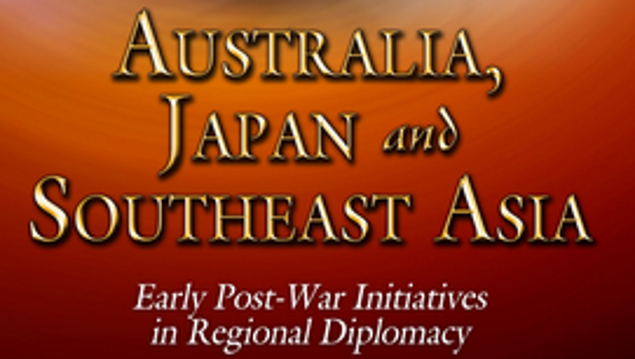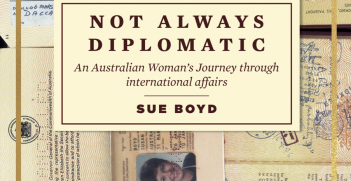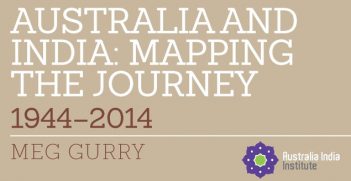Australia, Japan and Southeast Asia: Early Post-War Initiatives in Regional Diplomacy

Australia’s relationship with Japan is one of the longest, most important and trouble-free bilateral relationships since the Second World War. However, surprisingly little attention has been afforded to the political dimensions of this relationship despite the transformation from open acrimony to friendship by 1965. David Walton proposes that the academic interest in the economic elements of Japan’s post-war ‘boom’ overshadowed the regional dialogue that occurred between Australia and Japan. He provides a refreshing analysis of Australian-Japanese post-war relations and demonstrates that diplomatic cooperation occurred due to a sense of common danger over the political developments in Indonesia, communist expansion in the Southeast Asian region, Chinese domestic and foreign policy and the pressure exerted by the United States.
The principal aim of the book is to examine the construction of the policy networks between Australia and Japan and the impact of regular dialogue on regional political matters from1952 to1965. Walton argues that Japan became an important Australian partner on disputes concerning Indonesia and wider Southeast Asia. Policy networks, he suggests, are links between professionals and contribute to an understanding of the role of information in policy formation. In the case of Australia and Japan, policy networks were progressed by the foreign affairs departments. Australian diplomats valued consultation with the Japanese due to their knowledge of matters concerning China, greater Southeast Asia, the rise of Sukarno in Indonesia and the shared interest in promoting stability and a forward US military presence in the region.
Policy network formation was initially a haphazard process but key individuals in the Australian Department of External Affairs and the Japanese Ministry of Foreign Affairs (MOFA) were actively involved in the gradual process of institutionalising the networks. Specifically, Walton argues that Richard Casey (1949-51), Garfield Barkwick (1961-1964) and Paul Hasluck (1964-1969) promoted the bilateral relationship with Japan. Indeed, he pinpoints Richard Casey’s visit to Japan in March 1959 as the turning point in enhanced dialogue, as Casey and his Japanese counterpart Aiichiro Fujiyama discussed the General Agreement on Tariffs and Trade (GATT), Taiwan, Berlin and Antarctica. Indeed, by the 1960s, there was relatively close consultation on a wide range of issues such as the Economic Commission for Asia and the Far East, GATT, the Colombo Plan and the General Assembly of the United Nations (UN).
Secondly, Walton proposes that regular consultation with Japan influenced Australian foreign policy tone, style and direction. The West New Guinea (WNG) conflict laid the foundations for further regional cooperation and consultation between the two countries, which continued during the Indonesia declaration of Konfrontasi (hostility) towards Malaysia. Australian officials viewed Japanese ambassadors as a crucial source of information and a moderating influence on Indonesia during the WNG dispute. The Australian and Japanese positions differed on these issues and changed throughout the dispute, which led to a substantial Australian diplomatic effort to bring Tokyo into alignment with Canberra’s foreign policy objectives. The subsequent political dialogue fostered closer bilateral ties and allowed for an examination of the WNG dispute in a broader context. This collaboration was continued during Konfrontasi, as Australia and Japan’s strategic interests aligned to ensure the straits of Malacca remained free to protect their economic involvement in Indonesia and Southeast Asia more broadly. Furthermore, Walton charts the influence of Britain, the US, the UN, mainland China, Burma and Laos on the policy networks between Australia and Japan.
Walton’s analysis of the high range of regional consultation to create nascent policy networks is admirable; however, it under-emphasises the vital economic role of both of these countries to each other and to the US. Whilst Walton makes a valid point that the economic agenda has been over-emphasised in the existing literature, it appears undeniable that the wave of the Japanese economic boom set the tone for the improvement of Australian-Japanese relationship during this time. It would thus have been interesting to learn more about the role of the Department of Trade in the development of the policy networks during this period. Irrespective, Walton provides a much-needed insight into the factors governing Japanese foreign policy processes and the importance of Tokyo in Canberra’s regional diplomacy. It remains a vital text due to the importance of Japan within Australia’s current strategic circles, especially in the context of its military ‘normalisation’ and disputes with China in the South and East China Seas.
David Walton, Australia, Japan and Southeast Asia: Early Post-War Initiatives in Regional Diplomacy, Nova Publishers, 2012
Elise Terrell is a former intern at the National Office of the Australian Institute of International Affairs.





